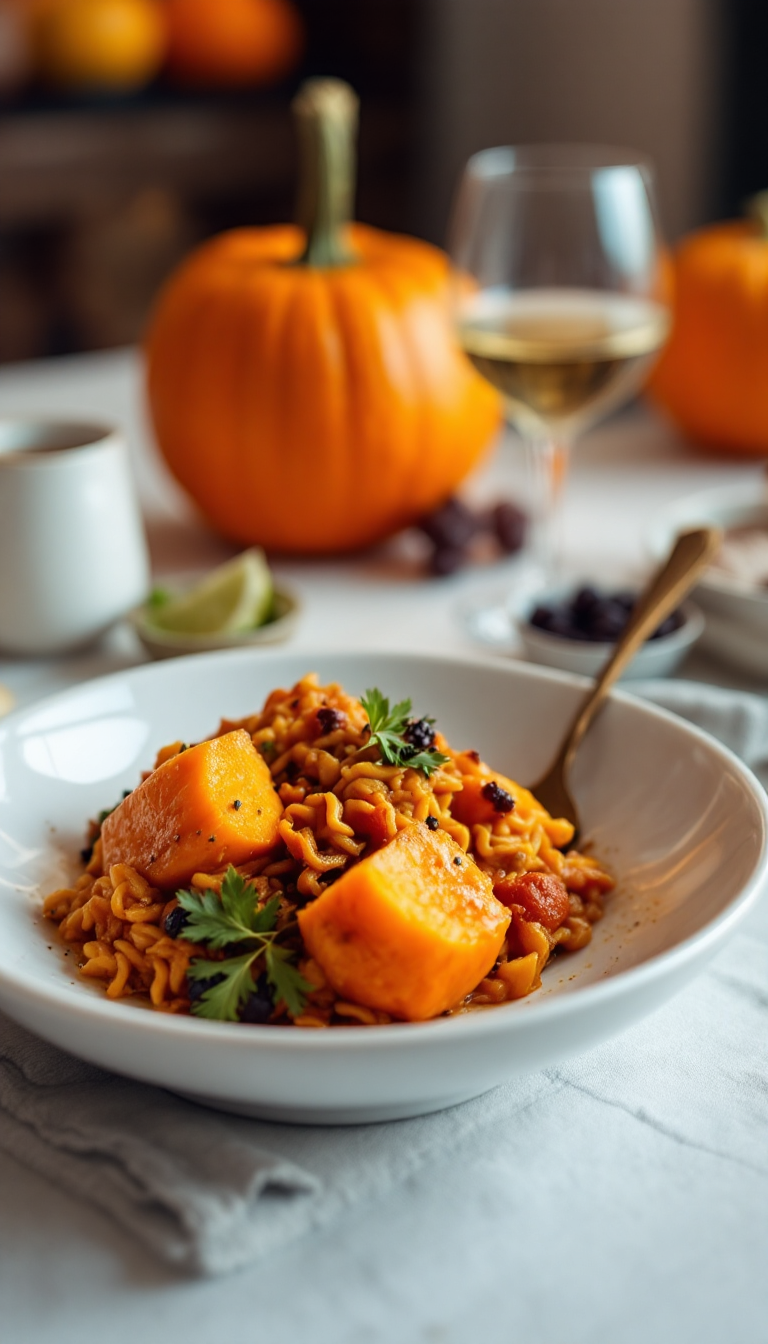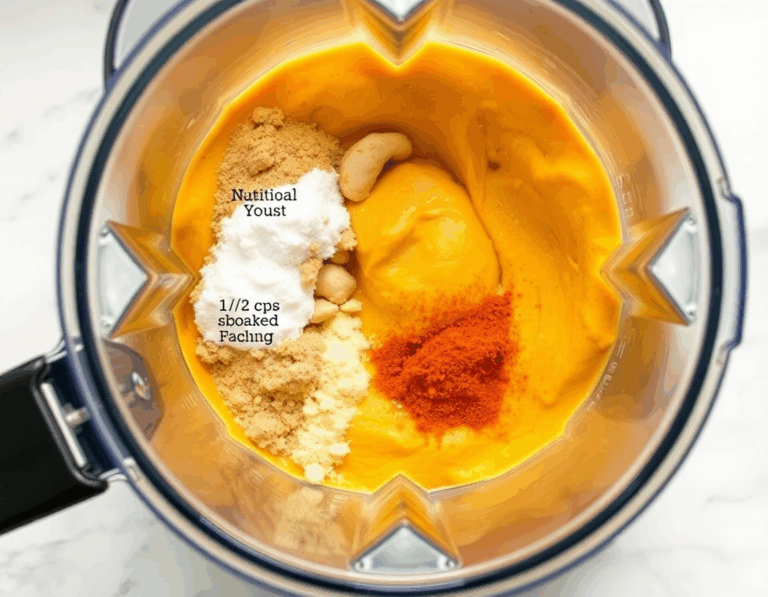
Ah, the sweet aroma of autumn! There’s something almost magical about the way the rich, velvety texture of this creamy vegan pumpkin pasta wraps around your senses—like a cozy blanket on a crisp fall evening. And hey, if you’re anything like me, you might find yourself daydreaming about sipping a pumpkin spice latte while twirling those pasta strands—it’s a whole vibe, isn’t it?
Steps
- Preheat your oven to 425°F (218°C). Cut a small sugar pumpkin or butternut squash in half and remove the seeds and fibers. If it’s tough to cut, microwave it for 60-90 seconds to soften.
- Drizzle the pumpkin or squash with oil and season with salt and pepper. Place it flesh-side down on a lined baking sheet and roast for 30-40 minutes until tender and slightly browned.
- Once cooled, scoop out the flesh and discard the skin. Alternatively, steam the pumpkin or squash in an Instant Pot by placing it on a trivet over 1 cup of water and pressure cooking for 12-14 minutes.
- Meanwhile, bring a large pot of salted water to a boil and cook 10 ounces of pasta until al dente. Drain and set aside.
- In a blender, combine 1 1/2 cups of the cooked pumpkin or squash flesh with soaked cashews, nutritional yeast, dry mustard, garlic and onion powders, smoked paprika, nutmeg, salt, pepper, miso paste, tapioca flour, lemon juice, and lite coconut milk.
- Blend the mixture until smooth and creamy, then taste and adjust seasoning as needed, adding more salt, miso, or lemon juice to your preference.
- Return the cooked pasta to the pot and pour over the blended sauce. Stir over medium heat until the pasta is well coated and the dish is warmed through. Adjust seasoning if necessary and serve hot.

Ingredients
- 1 small sugar pumpkin or pie pumpkin, or 1 small butternut squash (approximately 2 1/2 pounds or 1 kg)
- Olive oil or avocado oil, for roasting
- 1/2 cup (about 60g) raw cashews, soaked overnight in cool water or for 1 hour in boiling water
- 1/2 cup (40g) nutritional yeast
- 1 teaspoon dry mustard powder (optional)
- 1 teaspoon garlic powder
- 1/2 teaspoon onion powder
- 1/4 teaspoon smoked paprika
- 1/4 teaspoon freshly grated nutmeg (or ground nutmeg as a substitute)
- 1 1/2 teaspoons kosher salt, plus more to taste
- Freshly cracked black pepper, to taste
- 1 tablespoon mellow white or yellow miso paste
- 1 tablespoon tapioca flour or cornstarch
- 2 tablespoons fresh lemon juice
- 1 cup (240mL) canned “lite” coconut milk
- 10 ounces (280g) rigatoni pasta, medium-sized macaroni shells, or your choice of pasta (use gluten-free pasta if necessary)
Nutritional Values
Calories: 521kcal | Carbohydrates: 85g | Protein: 19g | Fat: 14g | Saturated Fat: 5g | Polyunsaturated Fat: 2g | Monounsaturated Fat: 5g | Sodium: 610mg | Potassium: 1374mg | Fiber: 6g | Sugar: 11g | Vitamin A: 24200IU | Vitamin C: 29mg | Calcium: 87mg | Iron: 5mg
FAQ
- Should I use canned pumpkin puree or fresh pumpkin?
- It generally depends on what you’re making. For soups and curries, a whole roasted pumpkin adds more flavor. For baking, canned pumpkin puree is more convenient.
- What can I use if I can’t find canned pumpkin puree?
- You can make your own puree by cutting a sugar or pie pumpkin in half, roasting it, and then pureeing it. Remember to drain any excess water using a sieve or cheesecloth, especially for baking.
- Which pumpkins are best for cooking?
- Sugar pumpkins or pie pumpkins are ideal due to their flavor and size. Avoid large carving pumpkins as they lack flavor. You might also consider kabocha squash, Thai pumpkins, or specialty types like “Long Island cheese pumpkins.”
- Is there a difference between canned pumpkin puree and pumpkin pie filling?
- Yes, there is a difference. Pumpkin pie filling includes sugar and spices, while canned pumpkin puree is just pure pumpkin. Always use the latter unless specified otherwise.
- How should I store leftover canned pumpkin puree?
- Keep it in an airtight container in the refrigerator and use it within 5 to 7 days. You can also freeze it, though it might slightly change the texture when used in baking.
Tips
- Opt for Fresh Pumpkin for More Flavor: When making soups and curries, consider using a whole pumpkin instead of canned puree. Roasting a fresh pumpkin enhances the depth of flavor in your dish.
- Drain Homemade Pumpkin Puree Thoroughly: If you make your own pumpkin puree, be sure to drain it well, especially for baking recipes. Homemade puree tends to be more watery than the canned version, and removing excess moisture is crucial for recipe success.
- Use a Sharp Knife and Microwave for Easier Pumpkin Cutting: If you find it difficult to slice through a pumpkin, microwave it for 30 to 60 seconds to soften it slightly. This makes it easier and safer to cut.
- Freeze Leftover Pumpkin Puree: If you have leftover pumpkin puree, freeze it for future use. This is particularly useful for savory or unbaked applications, though be mindful of potential texture changes in baked goods.
Equipment
- High-powered blender
- Instant Pot or pressure cooker
- Fine mesh sieve
- Cheesecloth (optional, for draining puree)
